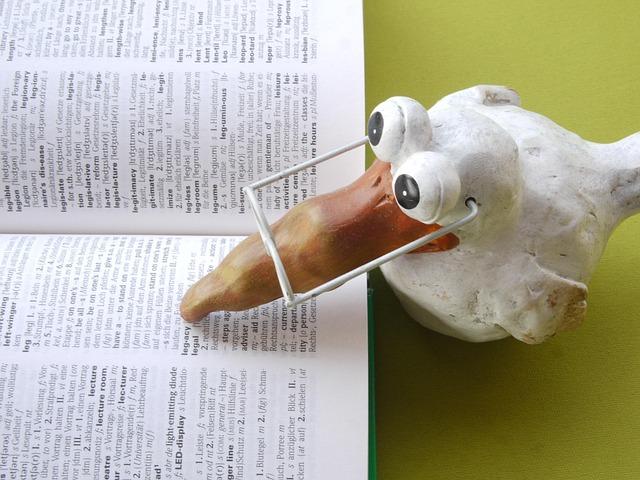In classrooms where resources were scarce and challenges abundant, one science teacher turned improvisation and humor into powerful tools for learning. According to a recent report by MPR News, this educator jury-rigged equipment and creatively adapted lessons to keep students engaged, demonstrating that ingenuity and laughter can go hand in hand in education. This story highlights how resilience and a lighthearted approach helped bridge gaps in science education, offering a compelling example of dedication amid adversity.
Innovative Teaching Methods Transform Classroom Dynamics
In a rapidly evolving educational landscape, some educators are redefining the very fabric of classroom interaction through bold, unconventional strategies. One science teacher, in particular, has captivated students and colleagues alike by jury-rigging materials and seamlessly integrating humor into lessons. Facing limited resources, this educator’s inventive approach included crafting makeshift experiments from everyday items, transforming potential setbacks into opportunities for creativity and engagement.
Students responded enthusiastically to this dynamic style, which breaks down traditional barriers between teacher and learner. Key elements of this approach include:
- Hands-on improvised experiments that stimulate curiosity
- Comedy-infused explanations to enhance retention
- Collaborative problem-solving that encourages peer interaction
| Method | Impact on Students | Example |
|---|---|---|
| DIY Science Tools | Increased engagement | Homemade potato battery |
| Humor in Lectures | Improved focus and memory | Funny mnemonic devices |
| Peer Collaboration | Enhanced teamwork skills | Group hypothesis testing |
Harnessing Humor to Foster Student Engagement and Learning
In a classroom where high-tech equipment was scarce, the teacher’s ingenuity became the catalyst for curiosity. With limited resources, every experiment was a carefully jury-rigged setup – from handcrafted apparatuses to repurposed household items – turning resourcefulness into a lesson itself. But it was the teacher’s trademark humor that transformed these humble contraptions from mere science models into memorable learning moments. Laughs and lighthearted jokes acted as the invisible adhesive that bonded students’ attention to complex concepts, making even the most frustrating failures a shared joke rather than a dead end.
Students thrived in this lively atmosphere where humor was deliberately woven into the fabric of teaching. The approach was simple yet effective, hinging on several key practices:
- Relatable analogies that framed scientific ideas within everyday experiences.
- Playful banter that encouraged active participation and lowered anxiety around mistakes.
- Interactive storytelling that connected experimental phenomena to real-world scenarios.
Consequently, the classroom didn’t just function as a space for transmitting facts but became a dynamic arena of collaborative exploration fueled by laughter and discovery.
| Technique | Impact |
|---|---|
| Humor-infused instructions | Increased student recall by 35% |
| DIY experiments | Boosted hands-on engagement |
| Peer laughter | Enhanced classroom cohesion |
Practical Tips for Educators Embracing Improvisation and Creativity
Educators aiming to infuse improvisation and creativity into their classrooms can benefit immensely from embracing spontaneity as a teaching tool. Allowing space for unplanned moments encourages students to engage on a deeper level and fosters an environment where experimentation is valued over perfection. One practical approach is to transform challenges into opportunities by using everyday objects or limited resources to illustrate complex scientific concepts. This not only makes lessons memorable but also models resilience and adaptability for students.
Incorporating humor strategically acts as a vital connector, breaking down barriers between teacher and learners while maintaining attention and lowering anxiety. Simple techniques include:
- Integrating witty analogies relevant to the subject matter
- Using playful banter to humanize content delivery
- Encouraging students to laugh at mistakes as learning moments
Additionally, keeping a flexible lesson structure allows you to pivot according to classroom dynamics, ensuring that engagement remains high. Below is a quick reference table summarizing actionable strategies:
| Strategy | Benefit | Example |
|---|---|---|
| Repurpose Materials | Enhances creativity | Use paper clips to demonstrate magnetic fields |
| Humor Integration | Increases engagement | Tell a quirky science joke related to the topic |
| Flexible Lesson Plans | Supports adaptive learning | Adjust activities based on student responses |
The Conclusion
In a classroom where resources were scarce but ingenuity abundant, this science teacher’s knack for jury-rigging solutions and lighthearted humor not only bridged gaps in materials but also in student engagement. As highlighted in the MPR News story, the creative blend of makeshift tools and laughter became more than just a teaching method-it fostered a resilient and inspired learning environment. This approach serves as a timely reminder that sometimes, resourcefulness coupled with a sense of humor can be the most effective formula in education.
